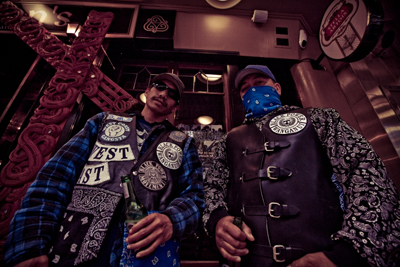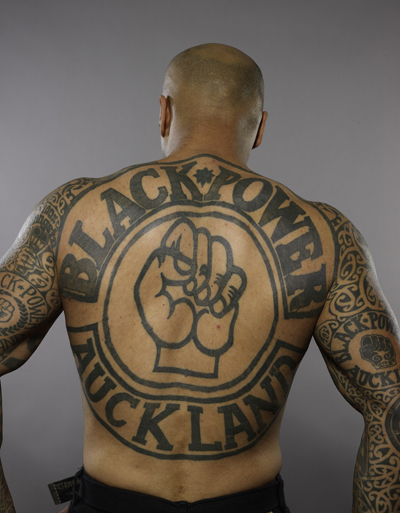It is said that those gifted with foresight often observe ‘tohu’, signs, portents of things to come. Recently we have witnessed a raft of missed signals in a range of circumstances across Aotearoa. In retrospect, it is clear that the vital indicators of the fiscal health of South Canterbury Finance were visible for those with eyes to see. Following the Christchurch earthquake, a commentator on National Radio, reporting on natural phenomena observed before earthquakes, postulated that birds and beasts may go silent so they can better evaluate threat when alerted by the low vibrations generated by oncoming seismic activity. The historical record tells us that several pit ponies refused to enter the Brunner mine prior to the disastrous event there in 1896 — Sixty-five workers ignored the sign and continued to walk to their deaths. In the case of the tragedy at Pike River, after their consciousness had been raised by the initial blast, decision makers were able to make wise calls and mitigate the likelihood of further deaths when they paid close attention to the build-up of toxic and explosive gases. Sure enough the combination of these fumes and the gun-barrel like configuration of the mine-shaft produced three subsequent explosions, any one of which would have been lethal for rescuers, and extinguished even faint hope for the survival of the 29 trapped miners.
There’s been a different form of toxic, and potentially explosive, fuming coming from the mind and mouth of our Minister of Police Hon Judith Collins recently, most notably, at the Police Maori Leadership Conference “Ngakia Kia Puawai”/ “Achieving Strategic Excellence in Critical Times” held at Pipitea Marae, Wellington, on 10th November 2010. We need to take note.

Artist: Murray Webb
Collins, in an address to the assembly, prefaced her remarks by acknowledging that courageous leadership is vital when it comes addressing the needs of the victims of crime. Indeed, it was an apposite comment to this particular audience, as the disproportionate majority of the victims of crime in New Zealand are Maori. Addressing the needs of victims required leadership, Collins said, should be driven by the quest
“to help, to protect, to serve and to do so with openness, compassion, courage and the desire to make our communities safer and better places”
You’ll get no argument from me on setting ‘safer and better communities’ as an objective, nor with the practice of openness and compassion in policing. Neither will I disagree with the Minister on her comments that there has been a failure of leadership around policies to deal with “gangs”, which Collins described as a “significant” law and order issue. Gangs were also noted as a serious problem in a report commissioned by Save the Children and made to the United Nations (“Hear our voices we entreat”) and drawn from the views of 199 young New Zealanders aged 6 to 17. Again, I’m on side. There is a problem.
There’s always the definitional issue around what we’re talking about when we speak of gangs in NZ. There is a definition attempted in the Prohibition of Gang Insignia Bill 2009
- A common name or common identifying signs, symbols, or representations (Clause 5:3a)
- Whose members, associates, or supporters individually or collectively promote, encourage, or engage in a pattern of criminal activity. (Clause 5:3b) (New Zealand Parliamentary Debates, 2009, 8 April)
This definition could equally be used to describe the boards of some finance companies or members of some religious orders, but that’s not where Collins is coming from. She’s referring to predominantly Maori groups like the Mongrel Mob and Black Power.
American academic, Loic Wacquant, writing in the New Left Review (NLR 13. “From Slavery to Mass Incarceration. Rethinking the ‘race question’ in the US” Jan Feb 2002), speaks of an ongoing reconstruction of the “imagined community” wherein there is a polar opposition between praiseworthy working families (in America, implicitly white, suburban and deserving) and the
“despicable underclass of criminals, loafers, and leeches, a two headed antisocial hydra, which is personified by the dissolute teenage welfare mother on the female side, and the dangerous street gang banger on the male side — by definition dark skinned urban and undeserving”.
Wacquant recounts the “troublesome fact” that the social sciences have failed to develop a robust analytical concept of the ghetto and are content to borrow the folk concept current in popular discourse, namely the rise of the policy myth of the ‘underclass’. He notes the
“practical revivification and official solidification of the centuries-old association of blackness within criminality and devious violence”. Thus throughout the urban criminal justice system we see the formula: (young + black + male = probable cause justifying arrest)”.
I don’t believe Collins is quite as binary as all that, as regards colour anyway. I am sure she sees ‘good’ Maori — patently those Police staff listening to her address — so calling a person ‘gang member’ enables a point of differentiation for people within what has become a subordinate and ostracised group. The members of this group (gang members), in Wacquant’s words, are “endowed with negative symbolic capital” and need to be caged in a “judicial ghetto” which serves to forcibly confine “a legally denigrated population”. He talks of the “fear of touching”, that is, engaging with these groups, describing it as an “urban condom”.
Speaking from within this notional ‘condom’ then, the Minister declared to the Maori police leaders, that she holds a policy of “not engaging” with gangs. This extends to refusing to meet with anyone who she knows to be a gang member. Collins said that
“we [Government] have been talking to the gangs and listening to their issues for decades and have not made a lot of progress”.
Well it’s certainly true that little progress has been made in resolving this problematic, but to claim that there has been ongoing and meaningful dialogue between Government and gangs is simply untrue. In fact the last meaningful comprehensive dialogue with Government was held through Justice Sir Clinton Roper’s enquiry in 1987. There have been exceptions with the “below the radar” efforts across recent successive Governments by Ministers such as Parekura Horomia, Jim Anderton, Tariana Turia, and Pita Sharples. It is also true that following up on the ‘Drivers of Crime’ summit Prime Minister John Key hosted my younger Black Power brother Eugene Ryder at Premier House. But, these forays aside, since around 1990, the general policy, especially championed by Ministry of Social Development’s Peter Hughes, has been Collins’ default position of ‘non-communication’. I can speak with some authority on this matter. I was the Chief Executive of the disestablished Group Employment Liaison Service, the last remnant of Ken Comber’s 1981 “Committee on Gangs” initiatives. Interestingly these initiatives not only stemmed the growth of gangs over the period but led to an actual reduction in gang numbers.
Now you’d hope that the Minister of Police, of all people, would be modeling to her staff the need to establish an evidential base for policies and practices. You wouldn’t want to ignore the indicators and court disaster. So what is the latest informed thinking then?
Just last week the Hastings District Council publicly released a report it commissioned on “Gang-based offending in the Hastings District”. It was undertaken by Shona Jones and Kay Morris Matthews of the Eastern Institute of Technology.
Jones and Matthews undertook a series of interviews, consulted practitioners, and reviewed the best available research and literature relevant to the matter. Not surprisingly they concluded that in New Zealand communities with high gang activity demonstrate statistically that they experience deprivation compared with other communities (Goldstein & Huff, 1993; Spergel, 1995; McLaren, 2000; Ministry of Social Development, 2008). These ghettos tend to have:
- comparatively higher numbers of young people than other areas
- higher numbers of Maori and Pacific populations than the average number in the population
- young people that tend to be less educated
- an over-representation of one parent families.
- an over-representation of families with low incomes.
- other indications of deprivation

The researchers then asked ‘what works?’ and came to the view that a multi-systemic approach was required. These could be any of a variety of type of intervention but they require good design and delivery with ‘good practice’ elements featuring:
- Well structured programmes
- Good quality contact between programme staff and participants
- Addressing issues that influence offending behaviours such as substance abuse, poor parental monitoring, and poor impulse control
- A responsive school environment
In contrast, when they asked ‘What does not work?’ they found, in summary, interventions less likely to be effective are those which:
- are purely coercive in their approach
- do not offer skill-building, assistance with life problems or education and training development opportunities
- are residentially-based programmes – these are less effective than non-residential services
- are adventure-based programmes – these are reported to have a neutral to slightly positive effect on recidivism (McLaren, 2000, Wilson and Lipsey, 2000).
United Nations World Youth Report (2003: pg 206) says that
“Interventions that are considered to be the most ineffective are those that target only the criminal component of gang behaviour as they fail to address the various factors that lead young people to join gangs”
On December 1st 2010 the Dominion Post featured an interesting article quoting the president of the Hastings Mongrel Mob, Rex Timu, who was espousing what many may find to be a surprisingly pro-social stance on gangs and gang recruitment. He said his chapter dissuaded youth from joining (and this is a trend elsewhere too), and stated that the hardest job was finding adult men who had the mana to convince youths to stay away from gangs.
“We turn the young fellows away. These days there are better things for them to do and they need to stay in school and get an education.”
Rex said that a series of hui held in the Hastings suburb of Flaxmere two years ago to discourage youths from joining gangs had been effective, but they had to be run by people who did not intimidate youth.
“Some of those we talked to then have jobs, have families, they’ve stayed out of gangs. They should stay at school, then find a job, and not get into trouble, or the next stop is jail.”
On the other hand, Collins rejects what seems to be a rational approach by this seemingly pro-social Maori gang leader, when she told her Maori police leaders that:
“Treading softy around gangs has only given them the time and space to grow and spread their influence”
It is true that gang numbers have grown since the cessation of Government’s programmes of pro-social engagement. This positive engagement had been recommended by the Parliamentary enquiries led by Hon Ken Comber in 1981 and Justice Sir Clinton Roper in 1987. However, it was all replaced by a slow but sure ‘crack down’ on gangs. This is reflected in the numbers of gang members now in our prisons as compared to say 1990. Moreover introduction of the so called “organised criminal group” legislation has introduced differential penalties and the treatment of ‘gang membership’ as an aggravating factor at sentencing. There is nothing resembling a soft tread there. And whilst these laws have been initially aimed at the current ‘social devils’ in gangs, considering the loose legislative definition of ‘gang’ I cited earlier, other New Zealanders might well sniff for gas. These otherwise piecemeal and knee-jerk laws fall into a disturbing design when considered alongside the proposed Criminal Procedure (Reform and Modernisation) Bill. Martin Kay, writing in the Dominion Post (November 20 2010) describes this proposal as the
“latest shift in a slow but steady undermining of basic rights which have developed over centuries to become the bedrock of the justice system”.
Included amongst these are the ‘presumption of innocence’, ‘the right to silence’, and ‘the right to be present to hear a case against you’. I won’t even attempt to describe the perils to human rights and freedom contained in the ‘Search and Surveillance Bill’. There must be civil rights mine canaries falling off perches all over the country.
The Minister told her Maori troops that:
“It is time we stopped fooling ourselves that the gangs are ever going to voluntarily change their ways”
We once had an old kaumatua at our marae. He could be very stubborn. I would tell people he had double deafness. When they enquired what I meant I’d explain that not only was he deaf but that he wouldn’t listen. Collins is similar. If she isn’t willing to dialogue she’s in no position to assess who is or who is not willing to change. Collins holds that gangs:
“raise their children to believe that the gang is their family”.
Well that’s not true in the case of my children, and nor does it seem to be the view of mobster Rex Timu, who, quoted in the Dominion Post article, said that he had told his five sons not to follow his footsteps. Indeed Rex’s son, Star Timu, has recently been selected as a NZ Secondary Schools rugby rep and is by all accounts a likely candidate for higher honours.
I noted that in the recent LTA election in Whanganui, Jack Bullock, the son of the local Hell’s Angels president successfully stood for and was elected to the City Council. He’s taken a different tack to his dad. He supports the ban of patches. Differing views accepted, (The Angels have challenged the Law in the High Court) I bet you a Harley to tricycle that Mr. Bullock Snr is as proud as punch of his boy. Moreover, I heard Annette Main, the new Mayor of Whanganui talking very much in inclusive terms as a way to resolve issues of public safety around the gang issue and to build sense of a strong and resilient community. Her Worship’s views resonate with the findings of the Hastings District Council Report and flow in a different direction to the views of Minister Collins.
“High profile criminal cases involving gang members detract from attempts by gang and community leaders to work collaboratively to improve community safety. However, despite this, there is more of a general tendency for community leaders, including gang leaders, to be communicating on important matters than not. One of the trends that seemed to be emerging was for critical points of contact to be identified or extended and connected across all sectors of the community; local and central government, iwi and Maori, flax roots community leaders and gangs. Where the links did not already exist in some parts of the local community, efforts have been made to establish them. A ‘whole of community’ approach is being sought by discrete parts of the community”.
(HDC Pg 11)

Mercifully, the same assembly addressed by Collins heard a different cut on the issue from former Policeman and prison reformist Kim Workman, himself a Maori. Kim proposed that if the enforcement of the Law is done in such as way that it disrupts and destroys community peace it potentially violates the Police Oath.
“Without favour or affection, malice or ill-will, until legally discharged; to see and cause Her Majesty’s peace to be kept and preserved; to prevent to the best of my power all offences against the peace.”
In his address Kim reflected on the relatively recent coalescence of populist forces around crime and punishment issues, and the rise of penal populism manifest in the “tough on crime” slogan. He picked up on a theme that I have been sharing with my readers around labeling and the “objectification of offenders” in which offenders are treated as being less than human, and as of less value than other human beings — the tribe of nga mokai — slaves. This too is at the heart of Wacquant’s discourse. Kim said that this perspective, in time, leads to the denial of basic human rights of particular classes of offenders and that
“international experience would suggest that behaviour of that kind does nothing to reduce crime, and is more likely to turn dangerous offenders into politically motivated terrorists”
Kim posed the question
“Do we see gangs as the extreme end of a dark underclass, with whom we should not contemplate engaging, or do we believe that through engagement, we can promote community peace?”
He offered two examples of contrasting policies applied in North America, the “Elimination through Enforcement — the Los Angeles approach” and “Ensuring Public Safety through Gang and Community Engagement — the New York approach”. In brief, both cities adopted their respective strategies over twenty years ago. In Los Angeles, city and state officials have spent billions of dollars on policing and surveillance, on development of databases containing the names of tens of thousands of alleged gang members, and on long prison sentences for gang members. There has been a poor return on investment. Law enforcement agencies report that there are now six times as many gangs and at least double the number of gang members in the region. I’d say that a similar thing has happened in New Zealand since we discontinued the pro-social programmes of the 80’s.
In New York the policy has been to take a public safety and preventive approach by promoting jobs, education and encouraged youth to draw away from gang activity. Three years ago Los Angeles Police reported 11,402 gang-related crimes. The New York Police reported 520 gang-related crimes.
Kim then proposed to the forum that even if we treated gangs to be terrorist cells, as some politicians have demanded, we’d take a more rational approach than that proposed by Minister Collins. He advanced the strategy developed by counter-terrorism expert Peter Lentini. I covered this idea in an earlier blog (Tama Heihei Kaki Maro Nov 2008), but, in summary:
- Above all, develop a rational, long term strategy.
- Avoid the temptation to politicize the gang issue, and to offer ‘silver bullet’ solutions through piecemeal legislation
- Don’t deal with public fear, by promoting public fear — take a rational long term approach to the issue
- Seek to understand issues of causation — and address them.
- Understand that while some gang members are dangerous criminals, not all members of gang families are criminals, or condone criminal behaviour.
In contrast to Collins, Lentini absolutely recommends engagement with the notional ‘enemy’.
I’m afraid that Collins’ approach is sending us down a very deep, dark and gaseous mine shaft. It promises nothing but explosions and future social grief. Personally I don’t imagine that we are likely to see our gangs turning into highly politicised guerilla groups. However there are current examples of gang members flirting with the Muslim faith and, if Al Qaeda wanted to recruit likely members in Aotearoa, then alienated and pissed off gang members might provide a good place to start.
My thought is that if things deteriorated because of the approach of people like Collins we are more likely to see a clustering of poor and criminal behaviours in low decile ‘ghetto’ communities. They would then tend to be subjected to intermittent ‘storming’ by the Police. I saw this happen in England, in Toxteth and Brixton in 1981, and again in the Liverpool 8 District in 1992. We have recently seen similar but heavier para-military surges against the criminal poor of the flavelas in Rio De Janiero. The same sort of action occurred earlier this year against the background of socio political upheaval in West Kingston’s Tivoli Gardens with the USA directed action against Dudus Coke. My mate Dr. Robbie Shilliam, who was in Jamaica recently, told me harrowing tales of extra judicial killings of young people by the Police in these garrison towns and showed me one chilling digitally captured clip where the cops acted as jury, judge, and executioner. It reminded me of the vigilante style policing in Ruatoria in the 1980’s and the virtual state of small scale civil war that existed at the time.
I do however retain general faith in the Police and trust in the wisdom of the senior officers and their ability to mitigate the crush, crate, and hate excesses of their current Minister. One has to suspect that politics will underlie both the earlier-than-expected termination of the tenure of the outgoing Commissioner Howard Broad and the shorter-than-expected term of appointment (normally five but in this instance reduced to three) of the new Commissioner Peter Marshall.
Broad, who by all accounts is extremely intelligent and an excellent strategic thinker, would not have endeared himself to Collins when he reported to Parliament’s Law and Order Select Committee that we should strive to reduce prisoner numbers in order to reduce crime. He believes that prison is being overused, and turns minor offenders into career criminal.
This resonates with Rex Timu’s comment to the Dom Post that the biggest gang recruitment centre in Hawke’s Bay is Hawke’s Bay Prison. Indeed around 40% of prisoners are serving less than six months, and get no rehabilitation or programmes. Instead they network with others who are a bad influence, hone their criminal techniques, develop bad habits, and return to the community worse for the experience. That is no way to guarantee public safety, or cater for the interests of victims. Nor does it promote the Government’s vision of a strong safe New Zealand and proud and resilient communities.
Think too of the disproportionate number of Maori in prison and consider the implication of a two year NZ study (“Invisible Children”) by Dot Mc Kinnon, for prisoner advocacy group ‘Pillars’, which found that the children of prisoners are seven times more likely to themselves end up in jail as compared to those in the general population. This implicit multiplier bespeaks a growing trend to racialised mass imprisonment.
Wacquant argues that slavery and mass imprisonment are genealogically linked. He traces the slavery “chattel system” through to the “Jim Crow” system of legally enforced discrimination and segregation from cradle to grave, on to the industrial metropolitan ghetto and now the
“novel institutional complex formed by the remnants of the dark ghetto and the carceral apparatus”.

Wacquant says we are experiencing the “first genuine prison society” wherein today’s inmates are the target of a threefold movement of exclusionary closure:
Prisoners are denied access to valued cultural capital, namely education
They are excluded from social redistribution and public aid (eg denied State Housing)
Banned from political participation (eg the disenfranchisement of prisoners proposed by Paul Quinn)
We have some big calls to make as a society if we want a strong, inclusive, successful Aotearoa New Zealand. We need leaders who are compassionate and wise. The New Zealand Institute has apparently recently noted the need to “build a resilient cohesive populace” as being amongst the ten most important issues that, if resolved, would make the biggest contribution to the future of Aotearoa. Well, to achieve that, in contrast to the current policy which seems destined to create the opposite, consider this alternative, based on “aroha ki te tangata”, and expressed as words of love:
‘I say to you wise people, work: you the men whose thoughts are wisdom, work: you the people having understanding, do that which is good for the people and lay down wise laws. Have no occasion to be anxious; you the people having wisdom should do all in your power to promote good. … This is the only word that has occurred to me to say, that when it is good and when it is evil that lies before you continue to do that which is good. That which is evil is not so powerful as not to be overcome by good, and that which is good is the only thing that you need spend your powers upon’
Maiden Speech by Tareha Te Moananui, first Maori member to speak in the New Zealand House of Representatives, 4th Parliament 1868.
God Bless and Merry Xmas
Arohanui. D




















